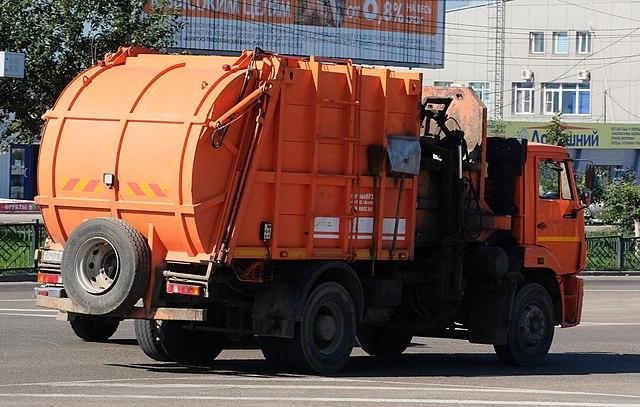Garbage truck drivers and garbage collection companies play a vital role in keeping our communities clean and safe, but this work can also be dangerous. According to the Bureau of Labor Statistics (BLS), in 2021, an astonishing 27.9 out of every 100,000 full-time collection workers suffered fatal work injuries. There were a total of 43 fatalities in 2019! Within the solid waste industry, 34 deaths were reported, with 21 related to transportation incidents alone. In 2020, solid waste landfill employees saw an injury rate of 3.4 incidents per 100 full-time employees, and materials recovering facilities saw incident rates of 5.1 per 100 full-time employees.
The risk of accidents increases during the winter, as people are more likely to generate more waste during the holidays, and the drivers have to work in harsh weather conditions. With that being said, in this article, I will share with you the top 8 safety tips for garbage truck drivers and garbage collection companies to help keep you and your colleagues safe on the job.
If you’re a new driver in the industry, these tips are especially important. Many waste collection companies in the U.S. have mandatory probation periods where any accident, no matter how minor, often results in immediate termination.
The risks associated with working in this field are very real, and it’s important that we take the necessary steps to minimize those risks. By following these safety tips, garbage truck drivers and garbage collection companies can reduce the risk of accidents and injuries, and make their jobs a little bit safer. In the next section, we’ll take a closer look at these tips and explore how they can help keep you safe on the job. Whether you’re a garbage truck driver or a garbage collection company owner, it’s important to take these tips to heart and make safety a top priority. Injuries and deaths are preventable, and by following these tips, you can make a real difference in the lives of those who work in this field. So, let’s dive in and explore the top 8 safety tips for garbage truck drivers and garbage collection companies.
- Always wear high-visibility clothing: Garbage truck drivers and garbage collectors should always wear bright, reflective clothing to help make them more visible to other drivers on the road. This is especially important when working in low-light conditions. Wearing high-visibility clothing can greatly reduce the risk of accidents and collisions by making it easier for other drivers to see garbage truck drivers and garbage collectors. The bright colors and reflective materials used in high-visibility clothing help to make the wearer more visible, even in poor lighting conditions. This can make a significant difference when working in busy or crowded areas, and can help to prevent accidents and injuries. Garbage truck drivers and garbage collectors should wear high-visibility clothing that meets the standards set by the American National Standards Institute (ANSI) or the International Safety Equipment Association (ISEA). This ensures that the clothing meets the necessary safety requirements. Additionally, it is important to ensure that the clothing is comfortable and fits properly, as ill-fitting clothing can be uncomfortable and distracting. Lastly, make sure to wear the clothing all the time while on duty and check the condition of the clothing regularly, replace if it is worn out or dirty.
- Conduct regular safety meetings: Garbage collection companies should hold regular safety meetings to discuss current safety concerns and to train employees on proper safety procedures. This is a great way to keep safety top-of-mind and to ensure that all employees are up-to-date on the latest safety practices. Regular safety meetings can help to identify and address potential safety hazards and to provide employees with the knowledge and skills they need to work safely. This can help to reduce the risk of accidents and injuries and to improve overall job performance. Garbage collection companies should hold regular safety meetings at least once a month. During these meetings, safety topics should be covered, such as proper lifting techniques, traffic safety, and emergency procedures. It is also important to have an open-door policy, where employees can bring up any concerns or questions they may have about safety. Moreover, it is important to have a designated safety officer who will lead the meetings, keep track of safety reports, and ensure that all safety protocols are being followed.
- Properly maintain equipment: Garbage truck drivers and garbage collection companies should make sure that all equipment is properly maintained and in good working order. This includes regular inspections and repairs to ensure that equipment is safe to use. Properly maintained equipment can help to reduce the risk of accidents and injuries. It also ensures that the equipment is operating efficiently, which can save time and money for the company in the long run. Garbage truck drivers and garbage collection companies should establish a regular maintenance schedule for all equipment. This includes daily, weekly, and monthly checks. Additionally, it is important to keep accurate records of all maintenance and repairs, so that any potential issues can be identified and addressed quickly. Furthermore, it is important to have a designated person in charge of maintenance, who will ensure that the equipment is properly maintained and repaired.
- Use caution when backing up: Garbage truck drivers should always use caution when backing up. This is especially important when working in residential areas where children may be present. Always be aware of your surroundings and use mirrors and cameras to help you see behind you. Backing up can be one of the most dangerous tasks a garbage truck driver performs. It requires a lot of concentration and attention to detail, and it is easy to miss something when you are looking in the rearview mirror. Garbage truck drivers should always check the mirrors and use the camera before backing up. They should also use a spotter or flagman if possible, especially when working in residential areas. It is also important to be aware of the surroundings and to look out for obstacles, such as children, pets, and parked cars. In addition, it is important to use the proper turning radius when backing up to avoid hitting anything or anyone behind the truck.
- Wear proper safety gear: Garbage truck drivers and garbage collectors should always wear proper safety gear, including hard hats, safety glasses, and steel-toed boots. This will help protect them from potential injuries caused by falling debris or heavy equipment. Proper safety gear can help to prevent injuries and accidents and can help to keep employees safe on the job. Garbage truck drivers and garbage collectors should wear safety gear that meets the standards set by OSHA or ANSI. This ensures that the gear meets the necessary safety requirements. Additionally, it is important to ensure that the gear fits properly, as ill-fitting gear can be uncomfortable and distracting. Moreover, it is important to wear the gear all the time while on duty and check the condition of the gear regularly, replace if it is worn out or dirty.
- Train employees on proper lifting techniques: Garbage collection companies should train employees on proper lifting techniques to help prevent back injuries. This includes using the correct lifting techniques, such as bending at the knees, and using equipment such as dollies or hand trucks to help with heavy loads. Proper lifting techniques can help to prevent back injuries, which are a common problem among garbage truck drivers and garbage collectors. Garbage collection companies should provide training on proper lifting techniques to all employees. This includes how to lift safely, how to use equipment such as dollies and hand trucks, and how to avoid common lifting mistakes. Additionally, it is important to remind employees about the importance of proper lifting techniques and to encourage them to speak up if they feel uncomfortable or unsafe while lifting. Furthermore, it is important to provide employees with the necessary equipment, such as dollies or hand trucks, to help them lift heavy loads safely.
- Use caution when working near traffic: Garbage truck drivers and garbage collectors should always use caution when working near traffic. This includes staying aware of your surroundings and using traffic cones or other warning signs to alert other drivers to your presence. Garbage truck drivers and garbage collectors often work near traffic, which can be dangerous. This makes it important for them to be aware of their surroundings and to take the necessary precautions to stay safe. Garbage truck drivers and garbage collectors should always be aware of their surroundings when working near traffic. They should also use traffic cones or other warning signs to alert other drivers to their presence. Additionally, they should use caution when entering or exiting the truck and when crossing the street. Furthermore, they should be aware of the traffic laws and follow them at all times to avoid accidents.
- Develop an emergency response plan: Garbage collection companies should develop an emergency response plan in case of accidents or other emergencies. This includes designated emergency personnel, emergency phone numbers, and evacuation routes. Having an emergency response plan in place can help to minimize the impact of an accident or emergency and can help to ensure the safety of employees. Garbage collection companies should develop an emergency response plan that includes designated emergency personnel, emergency phone numbers, and evacuation routes. Additionally, it is important to conduct regular drills and to train employees on what to do in case of an emergency. Furthermore, it is important to have a designated person in charge of emergency response, who will be responsible for coordinating the response in case of an emergency.
Garbage truck driving and garbage collection can be a dangerous occupation, but with the right safety measures in place, you can help keep yourself and your colleagues safe on the job. Remember to wear high-visibility clothing, conduct regular safety meetings, properly maintain equipment, use caution when backing up, wear proper safety gear, train employees on proper lifting techniques, use caution when working near traffic, and develop an emergency response plan. By following these tips, you can help to ensure a safe and successful career in the garbage industry.
References:










